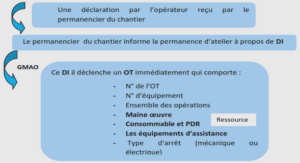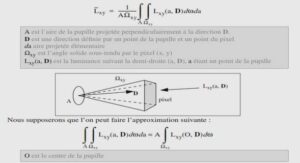Large deviations for directed percolation on a thin rectangle
Following the recent investigations of Baik and Suidan in [BS05] and Bodineau and Martin in [BM05], we prove large deviation properties for a last-passage percolation model in Z 2 + whose paths are close to the axis. The results are mainly obtained when the random weights are Gaussian or have a nite moment-generating function and rely, as in [BS05] and [BM05], on an embedding in Brownian paths and the K-M-T approximation. The study of the subexponential case completes the exposition. Dans cet article, on démontre des propriétés de grandes déviations pour un modèle de percolation dirigée dans le plan dont les chemins sont proches de l’axe. Les résultats sont obtenus dans le cas de variables aléatoires suivant une loi Gaussienne. La preuve s’appuie essentiellement sur l’approximation K-M-T exploitée dans ce cadre dans l’article de Bodineau et Martin [BM05]. Des résultats similaires sont obtenus pour des variables aléatoires admettant une transformée de Laplace au voisinage de 0. Introduction Random matrix theory has developed extensively in the last several decades following the pioneering results by E. Wigner in the fties. Gaussian models attracted a lot of attention, among them the Gaussian Unitary Ensemble (GUE). In this example, the knowledge of the joint distribution of the eigenvalues allowed for a rather complete understanding of both their global and local behaviors. In particular, the limiting behavior of the largest eigenvalue gave rise to the famous Tracy-Widom distribution [Joh98, Meh91, TW94]. Several random growth models, such as the longest increasing subsequence and the corner growth models, have been shown to develop a similar behavior relying on a common determinantal structure [Joh00a, Kön05]. In particular, the last-passage percolation or so-called corner growth model (see below for a precise description) has been deeply studied by Johansson in [Joh00a]. For geometric or exponential random variables (the only cases leading to a determinantal description), Johansson established both uctuations and large deviation asymptotics similar to the ones for the GUE random matrix model. Following the recent investigations by Baik and Suidan [BS05] and Bodineau and Martin [BM05] at the level of uctuations, the present paper deals with large deviations for the random growth model for more general random variables but on rectangles such that one side is asymptotically negligible with respect to the other at a given rate. The main results concern Large deviations for directed percolation on a thin rectangle. 76 Chapter 4 : Large deviations for directed percolation on a thin rectangle. Gaussian random variables and random weights having a nite moment-generating function. Somewhat surprisingly, the rate may be shown to be larger than the one for the uctuations. The comparison method used in this work is basically inspired from [BS05] and [BM05] and relies similarly on an embedding in Brownian paths.
Proof of Theorem
Throughout the rest of the paper, we write N instead of Nk for simplicity. As claimed before, to prove Theorem 4.1, we compare G(N, k) and L(N, k). To do so, let for any ε > 0, A = © G(N, k) ≥ 2 √ N k(1 + ε) ª and B = ©¯ ¯G(N, k) − L(N, k) ¯ ¯ ≥ 2 √ N k(ε − ε1) ª where 0 < ε1 < ε. Clearly, P[A] ≤ P £ L(N, k) ≥ 2 √ N k(1 + ε1) ¤ + P[B] (4.12) and P[A] ≥ P £ L(N, k) ≥ 2 √ N k(1 + 2ε − ε1) ¤ − P[B]. (4.13) Moreover, for every η > 0, P £ L(N, k) ≥ 2 √ N k(1 + η) ¤ = P £ L(1, k) ≥ 2 √ k(1 + η) ¤ (4.14) as a consequence of the Brownian scaling √ NL(1, k) d= L(N, k). To evaluate P[B], we couple G(N, k) and L(N, k) by letting X (j) i = B (j) i −B (j) i−1 for all i, j ≥ 1 so that the sequence (X (j) i )∞ i,j=1 is i.i.d. with standard normal distribution. When comparing G(N, k) and L(N, k), it is obvious that most of the variables will vanish. More precisely, repeating the computation done by Bodineau and Martin in Section 2 of [BM05], we get, by letting B (r) −1 = 0,
Exponential-tailed distribution and the K-M-T approximation
In this section, we replace the standard normal variables with weights having a nite momentgenerating function around zero. When comparing G(N, k) to the Brownian last-passage percolation model, Yk will not vanish as in the Gaussian case where the coupling was perfect. In the non-Gaussian case, a new coupling is required, and the things become more complicated. Following [BM05], we make use of the K-M-T approximation: a powerful tool to couple a partial sum of i.i.d. random variables and a Wiener process, both constructed on the same probability space. The K-M-T approximation was rst introduced in 1975 by Komlós, Major and Tusnády in their famous work [KMT76]. The basic version deals with a partial sum of i.i.d. random variables reconstructed in a way to be close to a partial sum of i.i.d. standard normal random variables. Later versions of this strong approximation do not require a common distribution, see [Sak91]. The reader can also consult [CH84] for a complete survey. Let (Xi)i≥1 be a sequence of independent random variables and denote by SN the corresponding partial sum. Let (Bt)t≥0 be a Brownian motion built on the same probability space. The following theorem is an immediate consequence of Theorem 1 in [KMT76].




